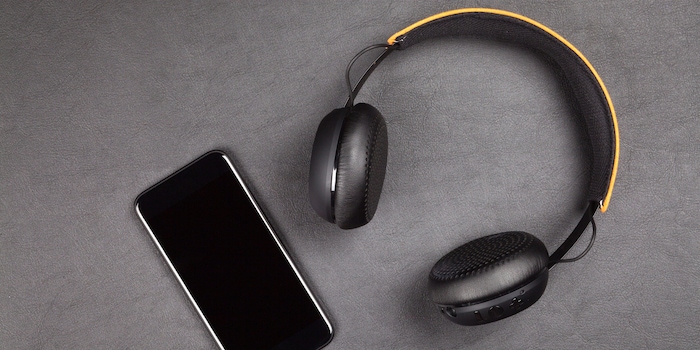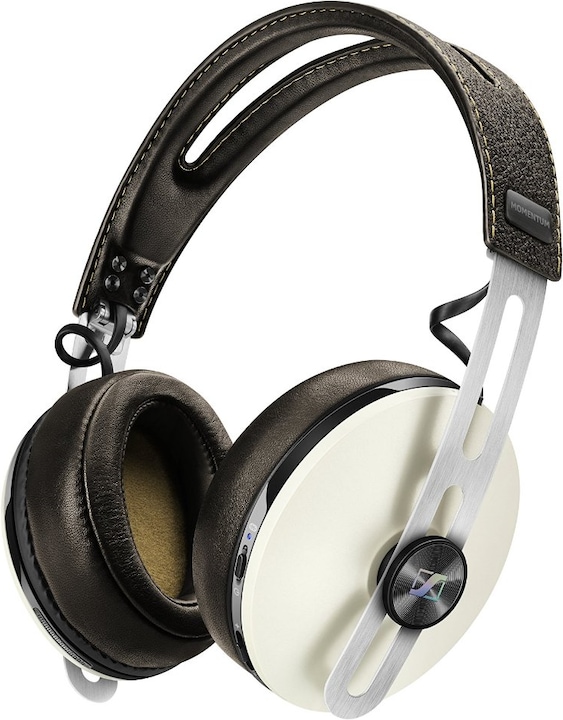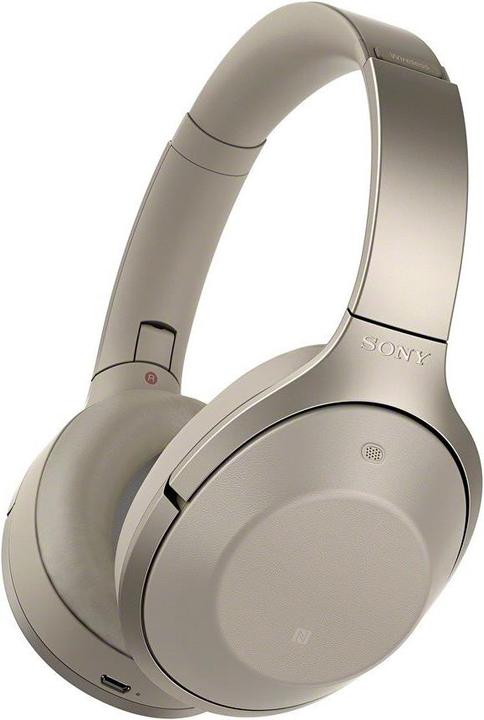

Bluetooth sound: the devil is in the detail
More and more high-quality Bluetooth headsets are coming onto the market, and the technology continues to develop, but beware of its shortcomings. Not all devices are suitable for every standard. This article shows you what to look out for.
Bluetooth is a great way to simply stream music without a wired connection. Since Apple removed the connection from its headphones, the Bluetooth headphones market has been growing even faster. Virtually every brand offers them, including established manufacturers such as Sennheiser, Beyerdynamic and AKG, even if their customers snub the technology.
In fact, wireless music transmission has a bad reputation among HiFi enthusiasts, which is easy to understand: it requires data compression that inevitably diminishes its quality. But if Bluetooth headsets are selling like hotcakes, the audio quality certainly isn't as bad as all that, is it? And is it possible to improve it?
Yes...and no! :)
We'll give you the gist of the answer in the first paragraph, then go into more detail in the rest of the article.
What you need to know
Bluetooth was developed with the following objectives in mind:
- lower power consumption
- less computing power required for encoding and decoding
These two points already clearly illustrate why HiFi enthusiasts are turning their backs on Bluetooth: sound quality has never been the developers' ultimate priority. Bluetooth's transmission capacity (also known as bandwidth) is also limited. Music must necessarily be compressed.
The following elements play a role when transmitting via Bluetooth:
- The capabilities and class of the source.- The capabilities and class of the receiver
- The distance at which the two devices are located
What is meant by "capabilities"? The codecs supported. The transfer can only take place if both devices support the desired algorithm, otherwise the lowest common denominator is used.
The class supported by the device is just as important.
- Class 1: max. 100 mW, typical range of 100 m outdoors and inside buildings
- Class 2: max. 2.5 mW, corresponds to a range of 10 m inside buildings and around 50 m outdoors
- Class 3: max. 1 mW, range of around 1 metre in the presence of obstacles, and 10 m outdoors
The Sennheiser Momentum 2 Wireless or the Parrot Zik 3 have a Class 1 range, for example. In reality, they probably use 3 or 4 mW - slightly more than Class 2 allows. The maximum 100 mW allowed is therefore not constantly transmitted directly into the headphones.
The popular QC35 from Bose has a powerful Class 2 range that easily beats the Sennheiser (Class 1) and earned it points in our test. (My colleague Dimitri Pfluger's smartphone, which was 3 walls and 20 metres away, was suddenly heard.)
Classes 1 and 2 are therefore relatively comparable, unlike class 3. Class 3 devices are headphones that save electricity and reserve little space for the battery. The Dash by Bragi is a good example. You should expect reduced range and short battery life.
Smartphones, notebooks and dongles work with all classes; it's the weakest device that will determine it. Headphones, that is. You need to know the capabilities and class of your device, as they will influence the quality of the transmission.
The Headphones will work with all classes.
The Codec: three algorithms are commonly used in order to transmit audio signals via Bluetooth: SBC, aptX and AAC. All devices must support SBC, as it is the standard codec. aptX is widespread, often employed by Android-based smartphones. In addition to SBC, iOS devices only work with AAC, not aptX.
The bit rate: this is constantly being redefined by the sender and receiver. The SBC codec starts with an average bit rate and tries to increase it. The strength of the receiver signal is a limiting factor. Bluetooth is a bidirectional protocol. The bulk of the data certainly passes from the transmitter to the receiver, but the latter must accept the data packets. If they contain errors, it sends them back. The weakest sender is almost always the receiving device, i.e. the headset.
You can increase the bit rate slightly by moving closer to the transmitter or removing obstacles. But a device with a Class 3 range will never become a device with a Class 1 range. The same applies to codecs: either both devices support the desired algorithm, or they don't.
Criteria to apply when making a purchase
Does all this sound very complicated? The situation has changed somewhat, and the audio quality is now more than decent, if not really good, especially when you consider that these wireless headphones are worn most of the time in relatively noisy environments. If you're not prepared to invest more than 400 francs, there are few devices whose quality will really disappoint you.
If you really want to optimise your experience, you now know that you can play on two factors. Should your device deliver the best possible sound quality or be as compact as possible (in-ear headphones)? You'll have to choose between the two. Optimum sound quality via Bluetooth over a long period of time and from a distance of a few metres requires headphones with a range of class 1 or 2. Both devices must also use the same powerful codecs, AAC or aptX.
Good combinations:
The iPhone and the Bose QC35: iOS supports SBC and AAC. The QC35 also features SBC and AAC. Once connected, the devices automatically tune to AAC.
Samsung Galaxy S7 and the brand new Sennheiser PXC 550 headphones: both devices feature aptX.
The Sony MDR-1000X deserves a mention, as it works with both AAC and aptX. The same goes for Audio-Technica's ATH-SR5BT.
Some basics
Originally, Bluetooth was mainly used for headset telephony: taking and transferring calls, chatting, hanging up. Profiles were created for this purpose: HSP ("headset profile") for audio and the HFP ("hands free profile") for hands-free activities. The HSP's frequency band is restricted: it does not transmit frequencies above 8 kHz, and only in mono. This is sufficient for telephone conversations, but not for listening to music. Despite their limitations, many of today's headsets with built-in microphones that are also used for telephoning are equipped with HSP and HFP. Telephone conversations are always transmitted by HSP to the recipient (a smartphone, most of the time).
For music, it's mainly the A2DP profile ("Advanced Audio Distribution Profile") that interests us. It defines the rules necessary for quality transmission. Its transmission is unidirectional. The bandwidth is 706.25 kbit/s since Bluetooth 2.0/2.1. EDR (Enhanced Data Rate) triples the bit rate to 2.1 Mbit/s. All headsets on the market work with this.
Profiles, however, only establish the rules of the game between the devices involved. As I mentioned above, the audio codec, but more importantly the bit rate available, determines the quality of the sound. In reality, given the many obstacles and other disruptive radio frequencies, it is often well below the theoretical maximum.
The codecs
SBC
SBC is the standard protocol used for Bluetooth. Every device operating with the A2DP profile must be familiar with this codec. SBC achieves a maximum bit rate of 345 kbit/s (an uncompressed audio CD represents 44,000 samples × 2 channels × 16 bits = approximately 1400 kbit/s). SBC gives very good sound quality at high bit rates. If the receiver is weak (in-ear headphones), obstacles or distance will reduce the bit rates. Unfortunately, those of smartphones are never communicated.
The SBC algorithm is relatively simple. It requires relatively little computing power in order to encode or decode sound and has therefore achieved its primary objectives (moderation and economy). However, compression is easy to improve using new chipsets, without increasing electricity consumption.
This is the main reason why the more efficient aptX and AAC algorithms are favoured.
aptX
aptX is a proprietary protocol whose licence must be purchased. aptX began as a version developed at a university. In 2010, it was taken over by CSR and successfully marketed. Since the end of 2015, CSR has been owned by Qualcomm, which supplies the processors (Snapdragon) and mobile chips for many Android smartphones; most of which, incidentally, are equipped with aptX. You'll find a list here.
The codec works with a fixed bit rate of 354 kbit/s. It may seem inflexible, but it has its advantages: audio quality is either excellent or non-existent. There is no in-between. The bit rates required for aptX must imperatively be combined with EDR ("Enhanced Data Rate"). aptX promises "CD-like quality" data transmission.
aptX HD
aptX HD was introduced in early 2016. It breaks dynamics with 24 bits and a 48kHz sampling rate. Qualcomm claims, incidentally, that it is superior to CD. (Whether more than 16 bits and 44.1 kHz is worth it will be the subject of a subsequent article.) aptX HD requires a fixed bandwidth of 576 kbit/s. Devices equipped with aptX HD are still rare. This is the case, for example, with LG's G5 and V20 smartphones and LG's Tone Platinum headphones.
AAC
AAC is also a compressor format. It was developed by Motion Picture Experts Group (MPEG), a working group behind the MPEG standards. AAC was conceived as the successor to MP3. Who would have thought that the latter would have such a long life? AAC surpasses MP3 in every respect: its audio quality is acceptable from 96 kbit/s, and generally indistinguishable from CD from 128 kbit/s. Its big advantage over MP3 is that it supports up to 48 channels.
AAC is YouTube's standard codec, and it dominates on Apple devices. Overall, however, it is slightly less widespread than aptX.
AAC is the standard YouTube codec, and dominates on Apple devices.
And why not MP3?
A2DP is abnormally compatible with any codec. In theory, continuing to use MP3, a dominant format all the same, poses no problem. The bit rates would be more than sufficient. Linux's stack de bluez (in English), for example, would be ready to use MP3. Unfortunately, nobody on the receiver side has implemented it, and the situation won't change, as it lacks multichannel capabilities, and its efficiency leaves something to be desired. The latest patent relating to MP3 expired in April 2017. Shame...
Sony and LDAC
Sony is one of the few manufacturers to have seized the opportunity to develop its own Bluetooth codec, LDAC, before incorporating it into its products. The aforementioned MDR-1000X not only works with aptX and AAC, but also LDAC. Combined with a Xperia smartphone, it reaches a technical pinnacle.
Samsung and UHQ BT
Samsung too has developed a proprietary transfer technology called UHQ BT. Compatible headphones, such as the Level On EO-PN920, can transmit at 24-bit and 96kHz with a Galaxy smartphone. This is an innovation for Bluetooth technology.
The real problem: double compression
When transmitting audio content via Bluetooth, audio signals are usually compressed twice. On the smartphone, the source material is usually present as AAC or MP3 data. This is decompressed before Bluetooth transmission and passed through the DSP (digital signal processor) before being encoded again in SBC, AAC or aptX. The device that serves as the final receiver decodes them and sends them to the acoustic transducer via the digital-to-analogue converter (DAC).
The idea of compressing data twice makes no sense. It's like scanning a page, printing it, scanning the printout, then printing it again. The result can only be worse than the original. True, but how much worse? All we can do is try to limit the loss of quality by improving the codecs. That's why it's better to have very high bit rates at source or use lossless hardware.
The ideal would be to transmit unprocessed data in passthrough mode if it is, for example, already in the right format at a compatible bit rate. Audiophiles would dream of intact transmission of sound from a lossless source.
The amplifier and DAC are now in the final device
Wireless headphones are fundamentally different from others in that signals can and must now be decoded in them. They must therefore be equipped with an amplifier and a DAC, which has its good points as well as its bad. Unfortunately, audiophiles often have to invest hundreds or even thousands of francs in these technological gems. There's no price limit. This lovely piece is quite simply a bargain.
On the other hand, the source is usually a smartphone, which needs to be fitted with an amplifier and DAC. Many smartphone manufacturers deliver excellent performance in terms of audio output. But I don't think companies like AKG, Sennheiser or Beyerdynamic make any compromises when it comes to their components. What's more, the manufacturers of the final devices now control the entire DAC → amplifier → broadcast chain, which can also be an advantage.
Bluetooth 5.0
Bluetooth 5.0, launched in December 2016, is expected to bring a marked improvement. It promises four times the range and twice the speed. But be warned: its promises are based as usual on a comparison between the very poor results of later versions and the maximum performance of Bluetooth 5.0. What matters are the following specifications: Bluetooth 4.x + EDR transmitted around 2 MBit/s (theoretical maximum). Bluetooth 5 + EDR and its 3 MBit/s are therefore only around 50% faster (Source: Bluetooth 5.0 specifications, p. 86) (in English).
Bluetooth 5.0's significantly greater range will particularly benefit in-ear headphones. And 3 MBit/s paves the way for even better codecs. You just have to want to create them. The first devices with Bluetooth-5.0 were spotted in spring 2017. Here too, both end devices must support the new standard. My colleague Dominik Bärlocher will explain the possibilities offered by Bluetooth 5.0 technology in more detail.
How do I know which codec is being used?
I have consulted many sites to support my article. Much of the distrust that some people have of Bluetooth stems from the early days of the HSP - Bluetooth audio combination, which produced a metallic sound. From problems connecting Bluetooth mice to dodgy default settings, operating system developers have been making mistakes all along.
And the lack of transparency about the type of codec and bit rate used doesn't help. It's like not being able to see which network your smartphone is using, Edge, 3G or LTE, or the signal strength.
MacOS Sierra
Connect your headset to your Mac. Hold down the ⌥ option key and click on the Bluetooth icon at the top of the list that appears. When you hover your mouse over the connected device, you'll see which codec is in use.
You'll have even more possibilities if you download the Hardware IO Tools for Xcode software from Apple's developer centre. It contains the Bluetooth Explorer. However, you need to have the appropriate account. Not only can you check which codec is being used, but you can also select various codecs and specific bit rates. Unfortunately, though, you can't do this without disconnecting and reconnecting the device.
Windows 10
Windows is pitiful in this respect. Maximum bitrates are supposedly used by default in Windows 10. But there's no other configuration possible. You can, however, replace the Windows Bluetooth stack with one from a third-party supplier. This software is mostly offered with Bluetooth dongles, but with a little fiddling, it often works with the built-in hardware and offers more configuration options. Reddit rewards anyone who finds a way to hack the Windows stack.
iOS
It's impossible to know which codec is active and what bitrate is being used on iPhones.
Android
On Android, the situation varies. Some manufacturers like Sony are willing to give information as to the codec, but there is often almost no way of knowing what codec and bit rate is being used. Nerds record Bluetooth traffic on Cyanogenmod and then analyse it on the pc with Wireshark. Have fun!
Finally, can you hear the difference?!
Now that I've bombarded you with information, you're probably wondering whether you really need aptX.
In practice, at a maximum bit rate of 192 kbit/s, the SBC codec is compared to MP3 quality, which is more than respectable. Untrained ears find it hard to distinguish the compressed version from the original. It's even harder when HiFi-friendly AAC and aptX codecs are used.
We will shortly be evaluating the different bit rates used by SBC and doing a blind test to compare SBC and aptX. Stay tuned!
More information for audio nerds
I'm the master tamer at the flea circus that is the editorial team, a nine-to-five writer and 24/7 dad. Technology, computers and hi-fi make me tick. On top of that, I’m a rain-or-shine cyclist and generally in a good mood.
Practical solutions for everyday problems with technology, household hacks and much more.
Show all



